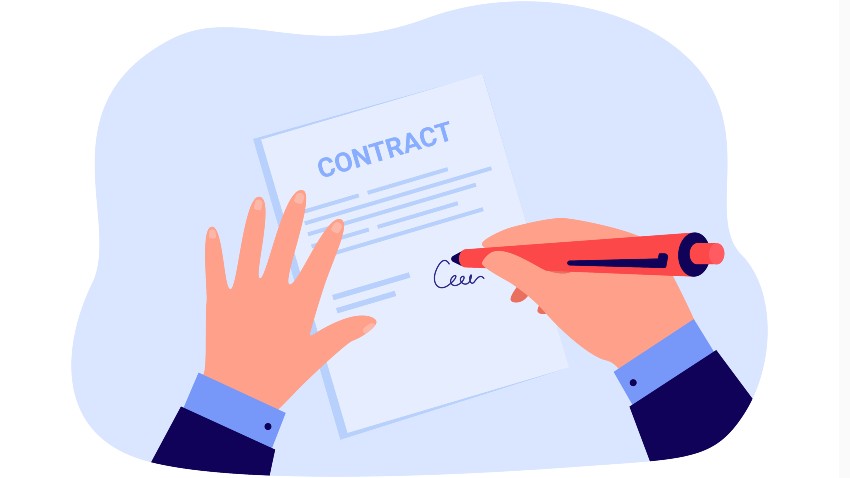Contract Review and Approval Process
In 1993, the Workflow Management Coalition (WfMC) establishment marked the beginning of the workflow technology’s maturing stages. At present, workflow technology gained widespread attention and is being used widely. It is being used in simple office automation to enterprise resource planning systems and also plays a major role in business process automation, directly influencing enterprise efficiency.
According to the business process, the contract approval process is defined by the contract approval software. Contract approval is one of the core components of project contract management. Currently, the contract manager manages the contract approval processes through manual operation. This management model wastes the workforce and resources, leading to delays in information transmission.

Why do Companies Need a Contract Approval Process?
Companies need a contract approval process to ensure they acquire the right goods and services for their operations which is a crucial part of the purchasing process. They need a contract approval process to ensure everything falls in place and each department stays on the same page under the same legal regulations.
In general, a contract approval process has two aspects. One is the vertical approval process, and the second is the horizontal approval process. The vertical approval process involves gradual approval from higher to lower levels with each approval decision level. In the horizontal approval process, one or more persons at the same level will involve in the contract approval process. Keep reading to know more about the contract approval process.
The contract approval process typically involves reviewing contracts to see if all the parties have done their respective parts. The reviewing process will reveal if any departments or stakeholders still need to approve them. The contract approval process can be time-consuming if it is disorganized and involves many people’s opinions. When you don’t have a centralized platform like Cflow, it will become a huge chaotic mess.
When you don’t have a centralized contract approval software, then there are chances of emailing older versions of a contract to your colleagues. Moreover, there are higher chances of missing some of the stakeholders when sending the updated contracts through email. This is why you should use an advanced contract approval software like Cflow to ensure all team members know the status of the approval process and that the process is happening as it should be.

Elements of Contract Approval Process
Here are some of the essential elements of a contract approval process. This includes submissions, approvers, permissions, due dates, and logs.
- Submissions refer to the contracts which are submitted for the approval process. The companies will provide specific guidelines to follow. Once the contract goes through the submission process, the contract goes to the relevant department for approval.
- The second element is the approvers. Here in this stage, the contract goes to the relevant approvers in each department. Each approver then decides if the contract should move forward or return to the person who submitted it for editing. The final approver then reviews it and approves it. In this stage, when you appoint the right approvers, you can ensure that the process can be consistent.
- The permission levels are set for the approval process. Relevant people are given permission to see, edit and approve the contracts. It is essential that each approver and the contract creator are given specific permission for data security. Setting up proper permission levels can eliminate mistakes and also can keep sensitive information secure.
- Setting up proper due dates can help get approvals on time. Setting up due dates is crucial to ensure that the approval workflow keeps moving. It also ensures that all approvers will get timely reviews and have enough time to go through the contracts before approving or rejecting them. Having proper due dates will give other departments a head start to plan and prioritize other processes.
- The final element is the records and logs. It is important to keep track of each step of the approval process to maintain efficiency and consistency in the workflow. When you check for the records and logs, it will help you to identify the errors and establish transparency quickly. Maintaining proper records can be beneficial during auditing.

Contract Workflow and Ways to Improve It
Before getting ahead with the ways to streamline the contract approval process, let’s take a look at the contract workflow.
Contract workflow can be described as the end-to-end process of getting the legal documents from creation to inception, which goes through a series of stages – from creation to signature to execution.
A contract workflow often can be overlooked by the legal team, which can lead to mistakes affecting different teams in the department. The process of gaining input and sending it to the approver must be frictionless. A typical contract workflow consists of:
- Creation of the contract
- Internal team collaboration
- External communication and redlines
- Approvals
- E-signature
The things that happen post-e-signature fall in the hands of the contract management team, where they store, analyze, and extract data as and when needed. Now, you need to know how the contract workflow can be improved to achieve maximum efficiency. These can be easily achieved using contract approval software.
* First and foremost, you need to map out all the stakeholders in the contract workflow. Before doing that, you need to ask some questions:
- Who owns the contract templates? (legal team)
- Who is responsible for creating contracts using those templates? (sales team)
- Who are all involved in the approval process of those contracts when they are sent out? (sales, operations, and legal teams)
- Who involves in the process of contract negotiation? (Usually the sales and the legal teams)
- Who finally signs the contract? (the C-suite in the company gives out the final approval and signatories)
* You can optimize the contract workflow using automated templates. The sales and other teams of approvers can quickly go through the contracts when they are created using defined templates. You can also ensure that the contracts are created under the legal requirements regarding language and other entities.
* Setting up an approval workflow can enhance contract workflow optimization. When setting up a definitive approval process workflow, only named individuals will have access to approve the contract before forwarding it to the next step. When there is a proper contract approval process, only those relevant members will have the power to create, negotiate, and approves, which will provide better control.
* With everything getting digitized, companies are starting to prefer e-signs over wet signatures. But that doesn’t mean it is obsolete, but e-signs can be beneficial at times – for instance, when there is a need for mass action where an approver needs to sign around 500-1000 contracts at a time. Going for a manual signature can be time-consuming. This is where contract approval software like Cflow will come into play. They allow you to sign several hundred contracts with a single click.
* Finally, setting up automated renewal reminders can be beneficial, especially for contract renewals during the contract management process. Some necessary contracts can get buried due to the voluminous contracts, and setting up automated renewal reminder processes can help you to stay on course and never miss a deadline.

Streamlining Your Contract Approval Process
Now back to streamlining your contract approval process.
Organizing your contracts
Not all contracts need to go through the same approval process. It differs with the type of contract and the source from which it is sent. You need to realize this and determine which requires approval and which doesn’t.
But how do you find that? Going through hundreds and thousands of contracts can be daunting. So having a contract approval software like Cflow enables you to have a searchable data repository. A searchable, centralized hub will allow members to locate a particular contract. This makes it easier to organize and find specific contracts that can be emailed. Cloud storage can bring you the needed information in seconds.
Standardized pre-defined templates
Cflow allows you to create standard templates for contracts. You can craft your workflows without needing manual reviewing. Also, you can set permission levels to allow who can create and modify any type of contract in need.
As Cflow is a codeless intuitive tool, you can easily create workflows using the drag and drop interface. The designer will allow users to set up contract templates, and any number of fields can be added, provide access to concerned approvers, and add e-signatures. This provides you with complete compliance with legal requirements and ensures that the contract stays within the organizational policies.

Best Practices of Contract Review and Management
Contract review and management often involve the conceptual process of analyzing and identifying the key provisions of the agreements. Generally, your legal team will review the contract and highlight potential risks. Some of the best practices include:
- The foundation of the contract review and management lies in the successful implementation of activities post the signature stage. Upon completion of the contract approval process, then the contract is reviewed. This is done to ensure that there are no unwanted surprises and there is clarity in the contractual agreement.
- Set up workflows that can send timely reminders when the contract renewal and termination stage is reached. This is a significant step to avoid unnecessary legal disputes.
- When there is a need for negotiating with third parties, the contract management team will review it and does the negotiation part to eliminate friction and facilitate stability. This also ensures that there is legal compliance between the parties involved and keeps track of the contract requirements.

Getting Started with Cflow
A manual contract approval can be inefficient and could go wrong at any moment, increasing the contract risk. Do they sound familiar?
- Your team struggles to keep track of the contract approval process, is lost in email communication, and disorganized spreadsheets.
- Approvals get delayed at each stage and sometimes get lost among different departments.
- Audit trails are lost, and it becomes impossible to follow along a string of emails in the back-and-forth communication.
Therefore, contract approval processes can be incredibly challenging, which Cflow can simplify. You can create futuristic contract approval workflows using Cflow based on contract types, people, stakeholders, and third parties involved for easy management. Cflow as a contract approval software will increase your visibility and enhance your productivity with its seamless automation.



